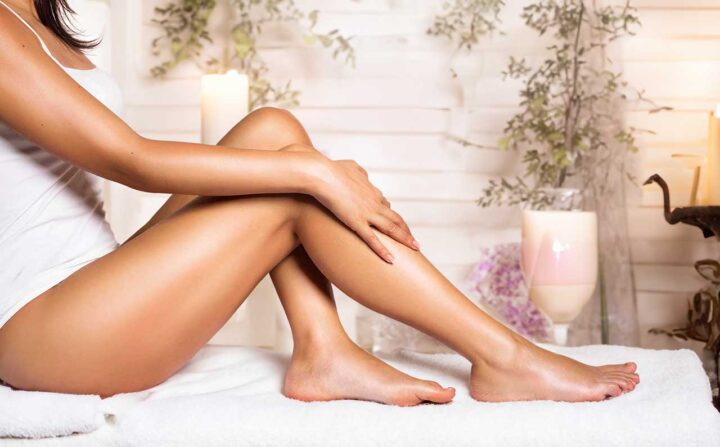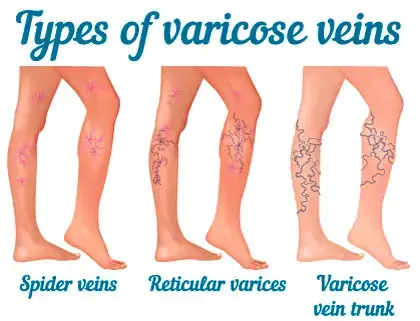Sherman Oaks
Sclerotherapy
Get rid of spider veins and other undesirable veins on your legs with sclerotherapy treatments in Sherman Oaks. Our minimally invasive, highly effective solution can give you the smooth, clear legs you want.
818-318-6985
Enjoy the freedom to show your legs with our Sherman Oaks sclerotherapy treatment
Sclerotherapy is a minimally invasive procedure administered by your healthcare provider to treat simple spider and reticular veins effectively. The treatment involves the injection of a solution directly into the affected veins.
Asclera (polidocanol) Injection is a prescription medicine that is used in a procedure called sclerotherapy to remove uncomplicated veins on your legs.
It is administered by a healthcare provider to treat uncomplicated spider veins (very small varicose veins <= 1 mm in diameter) and uncomplicated reticular veins (small varicose veins 1 to 3 mm in diameter). Asclera has not been studied in varicose veins more than 3 mm in diameter.
Asclera (polidocanol) Injection is contraindicated for patients with known allergy (anaphylaxis) to polidocanol and patients with acute vein and blood clotting diseases.
What is Asclera?
Asclera (polidocanol) Injection is a prescription medicine that is used in sclerotherapy to remove simple spider and reticular veins on your legs.
It is administered by a healthcare provider to treat uncomplicated spider veins (tiny varicose veins <= 1 mm in diameter) and uncomplicated reticular veins (small varicose veins 1 to 3 mm in diameter). Asclera has not been studied in varicose veins over 3 mm in diameter.
Asclera (polidocanol) Injection is contraindicated for patients with known allergy (anaphylaxis) to polidocanol and patients with acute vein and blood clotting diseases.

How does Asclera work?
Asclera is a sclerosing agent that is injected into the vein. It works by damaging the inner wall of the vein and eventually causing the vein to collapse on itself.
Over time, the damaged vein is replaced with tissue.
Individual results may vary, and many patients will require multiple injection sessions for complete treatment success.
Asclera treatment success
In a clinical trial:
95% of patients, predominantly females, treated with Asclera, showed good or complete treatment success as rated by physicians.
Asclera results were statistically significant when compared to placebo (p<0.0001) for the primary efficacy criterion “improvement of veins”.
How long is each Asclera session?
A typical sclerotherapy session lasts 15 to 45 minutes. One injection is usually administered per inch with multiple injections per session.
Following treatment, compression stockings or support hose should be worn continuously for 2-3 days and for 2-3 weeks during the daytime.
Repeat treatment sessions may be necessary.
What should I avoid after receiving Asclera?
For two to three days following the treatment, avoid the following (if you’re uncertain, please ask your healthcare provider)
- Heavy Exercise
- Sunbathing
- Hot Baths/Saunas
- Long Plane Flights

Types of varicose veins
What are varicose veins?
Varicose veins are large blue and dark purple veins. They pop from the skin and many times they have a string-like appearance and may twist or bulge.
Varicose veins are found on the legs most of the time.
What are spider veins?
Spider veins are tiny red or blue veins. They are closer to the surface of the skin than varicose veins. They can look like a thin red line, tree branches, or spider webs.
Spider veins can be found on the legs and face and may cover a small or large area.
What are reticular veins?
Reticular veins, also known as feeder veins, are the blue and green veins below the skin’s surface. They enlarge because of increased pressure in the veins.
What are the causes of spider and reticular veins?
Many factors may cause spider and reticular veins.
- Heredity: Having a family member with prominent veins may increase the risk of you developing them. Approximately half of the people who get varicose veins have a family history of them.
- Age: The normal wear and tear of aging may cause valves in the veins to weaken and not work as well.
- Gender: Women are two to three times more likely to develop varicose veins than men. Changes in hormones due to puberty, pregnancy, menopause, or taking birth control pills may increase a woman’s risk of developing varicose veins.
- Pregnancy: During pregnancy, the growth of the fetus increases the pressure on the veins in the legs. Varicose veins that occur during pregnancy usually improve within 3 to 12 months following delivery.
- Overweight and obesity: Having extra weight on the body can put additional pressure on the veins.
- Prolonged standing or sitting: This is especially true with legs bent or crossed. When standing or sitting with legs bent or crossed, the veins have to work harder to pump the blood up to the heart.
Other possible causes for varicose veins are race, posture, occupation, hormones such as estrogen and progesterone, primary valvular incompetence, and incompetent perforating veins.